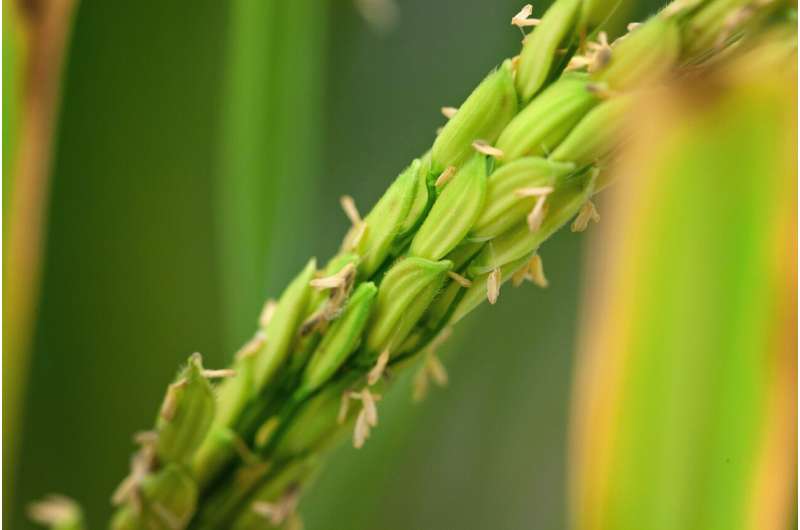A team from the Innovative Genomics Institute at the University of California, Berkeley (UCB) has achieved a significant increase in gene expression in a food crop by modifying its upstream regulatory DNA. This novel approach differs from previous studies that used CRISPR/Cas9 to knock out or reduce gene expression. The new research, published in Science Advances, is the first unbiased method to enhance gene expression and photosynthetic activity in plants.
Advancements in Gene Editing
Dhruv Patel-Tupper, lead author and former postdoctoral researcher in the Niyogi Lab at UCB, highlighted the benefits of CRISPR/Cas9 in fine-tuning gene expression. Unlike past research that focused on gene knockouts, this study explores the potential of increasing gene expression to improve plant traits.
Natural Gene Utilization
The study diverges from synthetic biology strategies that incorporate foreign genes to enhance photosynthesis. Instead, it focuses on naturally occurring genes involved in photoprotection. Inspired by a 2018 study in Nature Communications, which improved water-use efficiency by overexpressing the PsbS gene, the Niyogi lab aimed to modify native plant genes without adding foreign DNA.
Importance of Rice as a Model System
Rice, which provides at least 20% of the world’s calories, was chosen as the model system for this study due to its possession of a single copy of each of the three key photoprotection genes. This made it ideal for investigating the effects of gene expression modification.
Research Objectives and Support
This research is part of the Realizing Increased Photosynthetic Efficiency (RIPE) project, led by the University of Illinois and supported by the Bill & Melinda Gates Foundation, Foundation for Food & Agriculture Research, and U.K. Foreign, Commonwealth & Development Office. The goal is to enhance global food production by improving the efficiency of photosynthesis in food crops.
Methodology and Surprising Results
The research team used CRISPR/Cas9 to modify the DNA upstream of the target gene, controlling its expression. The results were unexpectedly significant, with gene expression changes larger than previously reported in similar studies. Patel-Tupper noted the inherent plasticity of plants, which have adapted to large DNA changes over millions of years, providing a basis for leveraging these changes to improve crop efficiency.
Findings on Gene Expression
The study found that inversions or “flipping” of regulatory DNA increased gene expression of PsbS. RNA sequencing revealed that these modifications had minimal impact on the expression of other essential genes, indicating a targeted and efficient approach.
Challenges and Future Potential
While the method proved possible, it remains relatively rare, with only about 1% of the modified plants displaying the desired phenotype. Despite the difficulty compared to transgenic approaches, this method could avoid regulatory issues, accelerating the availability of these tools to farmers.
Conclusion
The study demonstrates that CRISPR/Cas9 can generate significant gene expression changes, comparable to traditional plant breeding but with greater precision and speed. This approach holds promise for developing crops that can grow more efficiently and adapt to climate change.
Multiple Choice Questions (MCQs):
- What is the primary goal of the research conducted by the Innovative Genomics Institute at UCB?
- a) To knock out genes in food crops
- b) To increase gene expression and photosynthetic activity in food crops
- c) To decrease the expression of genes in food crops
- d) To add foreign DNA to food crops
- Which gene was specifically targeted in the study to improve water-use efficiency in plants?
- a) PsbS
- b) CRISPR
- c) Cas9
- d) Niyogi
- What percentage of the world’s calories is supplied by rice, according to the Food and Agriculture Organization?
- a) 10%
- b) 15%
- c) 20%
- d) 25%
- What was the unique finding regarding the impact of regulatory DNA inversions on gene expression?
- a) Decreased gene expression in all cases
- b) Increased gene expression of PsbS
- c) No change in gene expression
- d) Increased expression of foreign genes
- What was the surprising aspect of the changes in gene expression observed in the study?
- a) They were smaller than expected
- b) They were within the expected range
- c) They were much bigger than expected
- d) They had no impact on downstream activity
